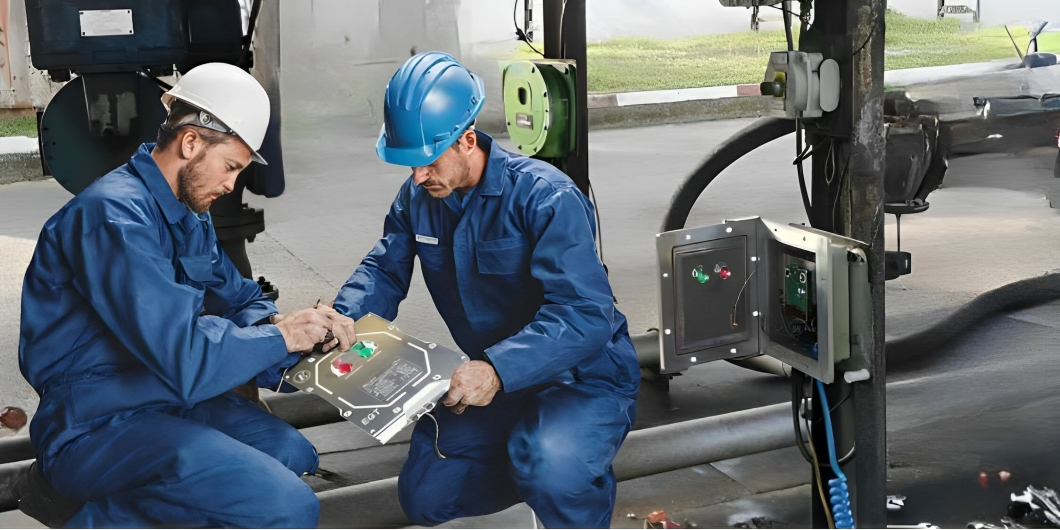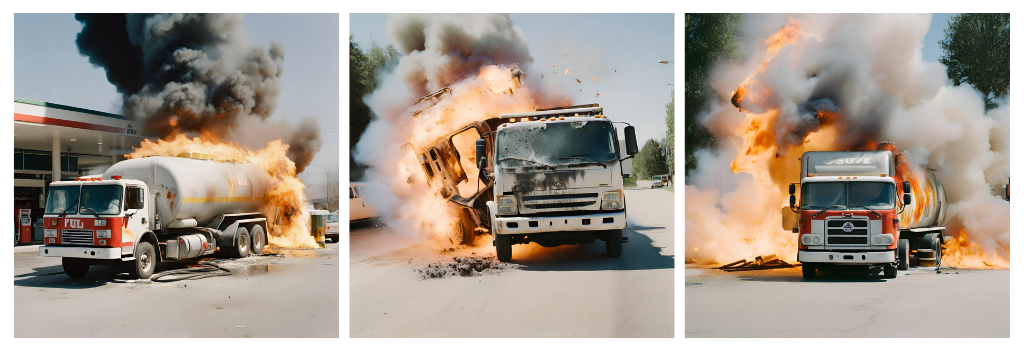
Although static electricity has been cited as an ignition source for a wide range of fires and explosions, it is one of the most misunderstood and underestimated hazards in the industrial workplace.
Even on sites where static is thought to be under control, it is very often the case that through a lack of awareness, lack of understanding or through sheer disregard for its risk potential that ignitions can, and do, occur from;
· Road tankers that provide a number of services to the hazardous process industries
· The transportation of dangerous materials from storage terminals to chemical processing refineries.
· The loading of dangerous material and fuel at storage terminals.
The loading and unloading of road tankers with flammable and combustible products presents one of the most serious fire and explosion risks for site operations within the industry. Carriage of such product is not without its risks and poses industries with one of the most complex problems in terms of assigning layers of protection that can control an electrostatic hazard in a safe and reliable way.
A study conducted by the American Petroleum Institute (API) identified static discharges as being responsible for numerous incidents in road tanker loading/unloading operations demonstrating just how long this potential threat has been acknowledged.
The susceptibility of road tanker operations where electrostatic discharge is potentially present as an ignition source is increased due to a lack of, or unsuitable grounding system, and the movement of , product during loading and transportation in a flammable and combustible environment.
Without adequate static grounding protection mitigating a discharge, movement of product through the vehicle or connected plant equipment will cause the static charge level to rapidly increase. When the accumulated charge is sufficient, a spark discharge is highly probable.
Typical applications for specialized vehicles and mobile plant equipment include:
· Fuel transportation vehicles
· Chemical spill and waste recovery service vehicles
· Evacuating chemicals from reactors, storage tanks and containers
· Emergency response for hazardous/flammable tankers
· Mobile transfer pumps, blowers and mixing systems
· Refueling aircraft and use of mobile bowsers

Ignition of materials during truck loading due to inadequate grounding.
The natural presence of static electricity in product transfer operations, combined with its associated ignition hazards, ensures that regulators must take static control precautions for road tankers very seriously.
To mitigate the risk of fire and explosion on a tanker, it is necessary to prevent a source of ignition and a flammable atmosphere being present simultaneously.
However, it is not always possible to exclude both these factors at the same time and precautions must be taken to control the risk accordingly.
The nature of road tanker loading and unloading operations is fraught with danger.
It is highly plausible that such operations have been conducted multiple times without a visible incident occurring ergo. electrostatic sparking takes place in previous operations without a flammable atmosphere being present in the spark gap when discharges occur.
This is a common feature of operations that have suffered from the consequences of a fire or explosion caused by static electricity.
Just because a charge hasn’t discharged it doesn’t mean any previous procedures haven’t allowed it to accumulate to dangerous levels.
API 2003 states that “Protection Against Ignitions Arising Out of Static, Lightning, and Stray Currents” describes the fundamentals of static electricity as “the accumulation of electrical charges on materials, the mechanisms by which charges are generated, and the processes of dissipating accumulated charges”.
The generation of electrostatic charge by itself does not produce discharges, a high electric potential and electric field is required for a discharge to occur. A spark resulting from high voltage does not mean that ignition of a flammable mixture will occur, this will only happen when the electrostatic charge that has been generated accumulates.
Hazardous electrostatic charges can only accumulate on bodies that are insulated from each other and from the ground; otherwise, the charges will naturally dissipate as fast as they are formed.
For combustion to be initiated sufficient energy must be transferred from the spark to the surrounding flammable mixture. The energy that is stored and available from a capacitive discharge is related to voltage and capacitance.
API RP 2219 states:
5.4.2 Grounding
Before starting transfer operations, petroleum transportation vehicles should be grounded directly to earth or bonded to another object that is inherently grounded such as a large storage tank or underground piping.
5.4.2 Grounding and bonding
This system (grounding) should provide an electrical contact resistance of less than 10 Ohms between the truck and a grounded structure.
· IEC 60079-32-1, 8.8.4 Vacuum trucks.
Vacuum trucks should be connected to a designated site earth before commencing any operations. In areas where site earth is not present, i.e. where portable earthing rods are required, or there is doubt regarding the quality of site earth, the resistance to earth should be verified prior to any operation.
· When the truck is connected to a verified earth, the connection resistance between the truck and verified earth should not exceed 10 Ω for pure metallic connections or 1 MΩ for all other connections.
For example, a typical road tanker when it is being filled with a liquid at recommended flow rates, but is without static earthing protection, could have its voltage raised to between 10,000 volts and 30,000 volts within 15 to 50 seconds.
This voltage range is very capable of discharging a high energy electrostatic spark towards objects at a lower voltage potential, especially anything at earth potential. Examples of objects at earth potential could be operators working in the vicinity of the road tanker or the filling pipe situated in the hatch on top of the road tanker.
It is possible to estimate the energy of such sparks by combining the capacitance of the road tanker with the voltage present on the road tanker. The capacitance is a measure of how much charge can accumulate on the outer surface of the road tanker. As road tankers have a very large surface area they can accumulate very large amounts of charge, which in turn, creates the presence of very high voltages on the surface of the road tanker.

60 Kaki Bukit Place #01-12 Eunos TechPark
Singapore, SG 415979 Singapore
Telephone: +65-6748 9091
Email:info@elok-asia.com